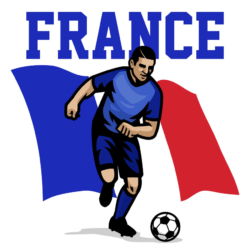Rafael Nadal has found that his tennis strategies can be applied to poker
Tennis and poker may be worlds apart in the way they are played, but people who participate in each field share a lot of the same attributes. The mental side of each game is similar, and players need to be highly focused in order to succeed. In both poker and tennis, it is often a battle of wits between two players. Experts are able to analyse their opponents and use this information to inform their own decisions. Legendary tennis players including Rafael Nadal and Boris Becker are both keen on the cards when off the court, while world-class poker players Patrik Antonius and Gus Hansen enjoy tennis in their free time.
Analysing Opponents and Adapting Strategy is Important in Both Sports
Poker is considered to be a mind sport where those with sharp tactical awareness, mathematical skills, and mental rigidity prevail. Players don’t need to have physical abilities, and they don’t need to train in the gym every day to be able to compete. Tennis, on the other hand, takes years of training to get to the top level. Players need to master all the serves and shots, but they too must tap into their mind strength in order to become grand slam winners. It’s in the mental game that poker and tennis have a number of commonalities.
In both fields, players are required to enter a battle of wits against an opponent. Of course, they have to follow their own optimal strategy whenever they enter a game. But this should also be adaptable depending on the other player’s style. Against aggressive players, the best tactic might be to sit back and try and draw them into making a mistake. When playing a more defensive opponent, players who normally adopt a reserved approach may have to become the aggressor.
In a five-set tennis match or a lengthy poker tournament, players need to have a game plan as to how they are going to approach different periods of the competition. They will have to face various setbacks, and try to keep a sharp mindset in order to overcome them. For instance, a poker player must not let a bad beat put them on tilt. Similarly, if a tennis player’s serve is broken, they can’t throw in the towel there. They need to continue fighting and try to break back.
The Mental Side of the Game is Crucial
Novak Djokovic started the 2020 season with a long unbeaten streak.
Tennis and poker players need to make quick decisions all the time, so it is imperative that they free their minds of clutter before, during, and after games. In poker, experts constantly stress the importance of focus and concentration in poker tournaments. Jared Tendler is a psychologist who trains some of the best Texas Hold’em and Omaha players in the business, and he spends a lot of time helping them work on decluttering the mind so it is in the best condition possible for poker games. Tendler talks about how players should limit active learning so they aren’t taking in too much new data at once. This allows them to refine the stuff they know while gradually adding new elements to their poker play.
Professional tennis players have attested to the fact that they need to keep their mind sharp at all times in order to maintain a winning mentality and adapt to a number of different scenarios. One of the most successful tennis players of all time, Novak Djokovic, won 16 straight matches at the start of the 2020 tennis season and attributed this success to his strong mentality. He noted that his desire to get better rather than keep doing the same things he has always done has helped him improve. This is another example of limiting active learning. The Serbian works on a certain new aspect of his game while maintaining the skills that have worked for him in the past.
In sport and poker the idea of having a winning mentality is often talked up. It is clear that when a player is on a streak of victories, they have a higher sense of self-belief and can take this into the next match. The same can be said about runs of losses. If a player is losing a lot of games they can go on tilt, and this negative emotion affects them moving forward. Tennis and poker players with strong mental resilience are able to get through these patches and get back to winning ways.
What Can Players of Each Discipline Learn From the Other?
Online poker pro Doug Polk explains the concept of bluffing.
Tennis players could learn some more mental techniques from poker pros. For example, deception plays a major part in poker. Players either conceal the strength of their hand as they try to milk chips from their opponents, or they bluff that their hand is strong in an effort to make others fold.
Tennis players could copy this approach by concealing their main strengths when they start playing against a new opponent. They could then switch their style later in the match in order to surprise the other player. The opponent may be so stumped by this that they are unable to adapt in time.
Poker players may find that they can learn a few techniques from tennis players as well. Djokovic spoke of the need to undergo emotional training along with recovery and mental training in the aftermath of matches. After a heavy defeat, it is important to work on these elements in order to bounce back. Martin Jacobson is a prime example of a poker player who did this. The Swedish card shark crashed out of his first World Series of Poker Main Event after playing only a few hands. But he came back stronger and took down the grand prize of $10 million in 2014.
Tennis and poker look different on the eyes, but inside the players’ brains a lot of the same stuff is going on. Players of both sports need to keep their minds sharp and be able to quickly adapt their tactics depending on the situation.





